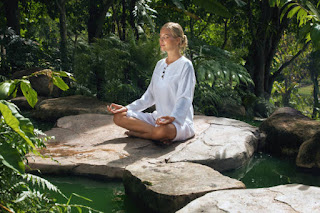Fun Yoga Poses for Kids: Promoting Physical Fitness
In today’s fast-paced world, where screens often dominate playtime, finding engaging ways to promote physical fitness in children is more important than ever. Yoga, an ancient practice known for its holistic benefits, emerges as a delightful bridge between fun and fitness for the younger generation. For parents looking to introduce their kids to a lifestyle that embraces focus, flexibility, and overall wellness, yoga presents a golden opportunity.
Yoga is not just about bending and twisting; it’s a journey into mindfulness that teaches kids about patience, perseverance, and the importance of harmony between the mind and body. As we dive into the world of fun yoga poses for kids, we’ll explore how these activities can transform not just their physical health but their mental and emotional wellbeing too.
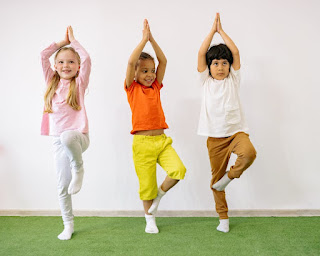
Moreover, for yoga teachers and parents alike, understanding the nuances of introducing children to yoga can make a significant difference. It’s about making each session inviting and enjoyable, ensuring that children view yoga as a playful escape rather than a chore. This guide aims to provide you with practical advice, from integrating yoga into daily family activities to building a routine that fosters a love for fitness from a young age.
Join us as we embark on this exciting journey, exploring how yoga can play a pivotal role in promoting physical fitness among kids, all while having a blast. Together, we can lay the foundation for a healthier, happier future for our children.
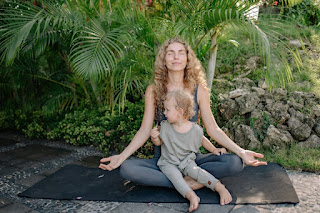
Introduction to Yoga for Kids
Introducing yoga to children might seem daunting at first, but with the right approach, it can become one of the most rewarding experiences for both instructors and parents. Yoga offers a myriad of benefits for young minds and bodies, including improved focus, enhanced flexibility, and a boost in overall fitness. Moreover, it serves as a fun way to introduce mindfulness and exercise, laying the groundwork for healthy habits that can last a lifetime.
The Benefits of Yoga for Children: Focus, Flexibility, and Fitness
Yoga challenges the body and mind, teaching kids the value of patience and the joy of achieving new milestones. Through poses that range from simple stretches to fun animal imitations, children learn to focus their minds, stretch their bodies, and control their breathing. The physical benefits, such as improved flexibility and balance, are matched with mental benefits, including enhanced concentration and stress reduction.
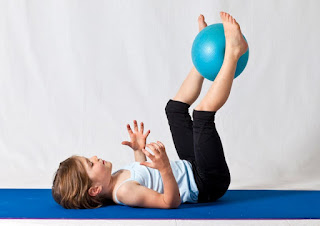
Physical Health and Development
Yoga’s physical benefits for children are vast. It enhances flexibility, a crucial factor in preventing injuries, especially in the active lives of children. Strength is another cornerstone of yoga, not just in muscles but in improving bone health and overall endurance. Coordination and balance are developed through poses that challenge the body’s center of gravity, teaching children about their bodies and how to control their movements gracefully.
Furthermore, yoga introduces children to the importance of breathing and relaxation. Learning how to control their breath helps regulate their body’s response to stress, promoting a sense of calm in other aspects of their life. This is particularly valuable in today’s fast-paced world, where even children are not immune to the pressures of daily life.
Mental Well-being and Focus
In a classroom or home environment, the ability to concentrate and maintain focus is significantly enhanced through regular yoga practice. Yoga poses and meditation require attention and stillness, which translate into improved attention spans and reduced hyperactivity outside the yoga session. This improved focus can lead to better academic performance and more disciplined behavior.
Yoga also serves as an early introduction to mindfulness for children. It teaches them to be present, aware, and engaged in the moment, cultivating a mindset that appreciates the here and now. This ability to be mindful has been linked to increased happiness, reduced anxiety, and a greater capacity to deal with emotions healthily.
Emotional Growth and Social Skills
Yoga is unique in its ability to foster emotional intelligence in children. Through the practice, kids learn patience, empathy, and resilience. Poses that require perseverance and those that induce relaxation contribute to a well-rounded emotional response system, allowing children to navigate their feelings more effectively.
Moreover, yoga can be a social activity that teaches children about cooperation and respect for others. Group classes encourage teamwork and understanding, often involving partner poses that build trust and communication skills. This aspect of yoga strengthens community and connection, offering children a sense of belonging and acceptance.
Introducing Kids to Yoga: First Steps and Advice for Yoga Teachers Focusing on Children
Starting with yoga basics and incorporating stories or themes can make yoga sessions more engaging for children. Teachers and parents can create a nurturing environment by using playful language, encouraging imagination, and offering positive reinforcement. It’s important to tailor the practice to the child’s age and development level, ensuring that each pose and activity promotes a sense of achievement and fun.
Yoga teachers specializing in children’s yoga should also emphasize safety and personal space, making sure that each child feels comfortable and supported throughout the practice. Additionally, involving parents in the process can help reinforce the practice outside of the classroom, making yoga a shared activity that supports family bonding.
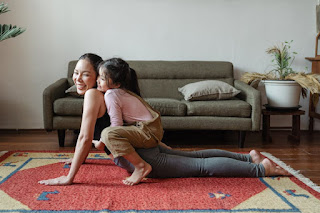
Top Fun Yoga Poses for Kids
Introducing children to yoga through engaging and playful poses not only makes the experience memorable but also helps in developing their interest in physical activity. Below are some yoga poses that are particularly favored among kids for their fun elements and the benefits they offer.
1. The Airplane Pose (Virabhadrasana III)
Imagining themselves as soaring airplanes, children can learn balance and concentration through this pose. It strengthens the legs and core, improves coordination, and teaches focus and determination as they try to keep their “airplane” steady.
2. The Tree Pose (Vrksasana)
This pose allows children to imagine themselves as tall, strong trees. It’s excellent for teaching balance and stability while fostering a sense of calm and focus. Encouraging kids to breathe deeply as they stand tall also introduces them to mindful breathing.
3. The Downward Dog (Adho Mukha Svanasana)
A favorite among children, this pose mimics a playful dog stretching. It’s beneficial for stretching the hamstrings and back, strengthening the arms and legs, and boosting circulation. Kids enjoy the upside-down view, which adds a fun perspective to their yoga practice.
4. The Cobra Pose (Bhujangasana)
By imitating a hissing cobra, children strengthen their spinal muscles and improve flexibility in their back. This pose encourages creativity and imagination while teaching the importance of strength and gentleness.
5. The Warrior Pose (Virabhadrasana II)
Embodying the strength and focus of a warrior, this pose teaches kids about resilience and perseverance. It strengthens the legs and arms, improves balance, and encourages a sense of empowerment and bravery.
6. The Butterfly Pose (Baddha Konasana)
Sitting with the soles of their feet together and flapping their legs like butterfly wings, children can improve their hip flexibility while engaging in a fun, imaginative activity. This pose is also calming and can serve as a gentle introduction to meditation.
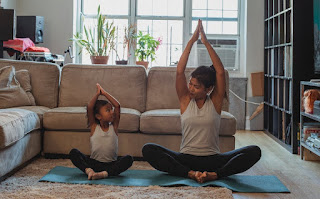
Yoga Games and Activities to Enhance Focus and Mindfulness
Yoga can be much more than a series of poses; it can be a gateway to learning deeper concepts of mindfulness and focus through play. Integrating games and activities into yoga sessions not only makes the practice more engaging for children but also reinforces the lessons yoga aims to teach. Here are some innovative yoga games and activities designed to enhance focus and mindfulness among kids:
Yoga Storytelling
Combine storytelling with yoga by creating an interactive story where each plot point introduces a new pose. For instance, narrate an adventure through a magical forest, with each animal encounter representing a different yoga pose. This method engages children’s imagination, encourages them to move their bodies, and teaches them the poses in a memorable context.
Yoga Pose Memory Game
Create a deck of cards with different yoga poses illustrated on them. Spread the cards face down, and players take turns flipping two cards at a time, trying to find matching poses. When a match is found, everyone performs the pose together. This game enhances memory and concentration, while also providing a fun way to practice the poses.
Mindful Listening
This activity involves using a bell or a set of chimes to practice mindful listening. Instruct the children to close their eyes and focus on the sound of the bell. They should raise their hand when they can no longer hear the sound. This practice teaches children to focus their attention and increases their awareness of the present moment.
Breathing Buddies
Give each child a small stuffed animal to place on their belly. Have them lie down and observe the rise and fall of the stuffed animal as they breathe in and out. This activity helps children understand the concept of deep breathing for relaxation and can be a calming practice before or after more active games.
Yoga Freeze Dance
Play music and encourage the children to dance and move freely around the room. Periodically stop the music and call out a yoga pose that everyone must freeze in. This game is excellent for teaching children to transition quickly between movement and stillness, enhancing their ability to control their bodies and focus their minds.
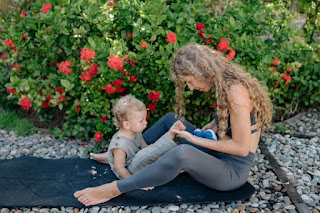
Building a Mindful Generation: The Lasting Impact of Yoga on Children
As we’ve explored the various facets of introducing yoga to children, from engaging poses and fun-filled games to mindfulness activities, it’s clear that yoga offers more than just physical benefits. It’s a holistic practice that nurtures the body, calms the mind, and soothes the spirit. In teaching children yoga, we gift them a toolbox for life, equipped with skills in focus, resilience, empathy, and wellness.
A Foundation for Future Wellness
The habits we instill in children today lay the groundwork for their future. Yoga teaches them early on the importance of physical activity, balanced with mental and emotional well-being. By making yoga a regular part of their routine, we encourage a lifestyle that values health and mindfulness, paving the way for a generation that approaches life with balance, strength, and compassion.
Empowering Children with Tools for Life
Yoga equips children with the ability to manage stress, navigate their emotions, and approach challenges with a calm and focused mind. These are invaluable skills that will serve them well beyond their yoga mat, in classrooms, in relationships, and eventually, in their professional lives.


